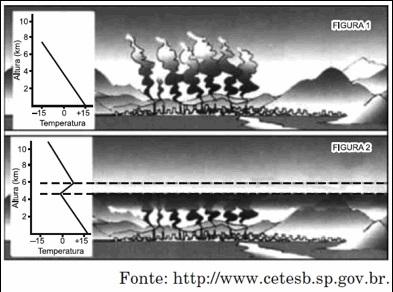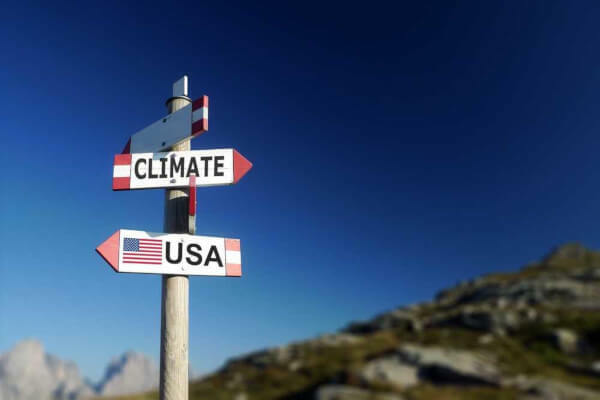question 1

(FUVEST) In some cities, you can see on the horizon, on certain days, with the naked eye, a layer of brown color. This condition affects the health, mainly, of children and the elderly, causing, among others, respiratory and cardiovascular diseases.
The figures and text above refer to a process of formation of a climatic phenomenon that occurs, for example, in the city of São Paulo. Its about
a) heat island, characterized by rising temperatures on the outskirts of the city.
b) intertropical convergence zone, which causes an increase in atmospheric pressure in the urban area.
c) convective rain, characterized by the formation of clouds of pollutants that cause environmental damage.
d) thermal inversion, which causes concentration of pollutants in the lower layer of the atmosphere.
e) Southeast trade winds, which cause a sudden increase in the relative humidity of the air.
question 2
(UNICAMP) Pollution in large urban centers, such as Curitiba, can cause certain diseases, such as rhinitis, allergies, asthma, skin and hair problems. People sensitive to airborne particles can develop such diseases when breathing polluted air from large cities.
Throughout the year, these diseases can happen, but it is in winter that they are more pronounced.
(Adapted from State Newspaper, Curitiba, 06/01/2009.)
During the winter, in Curitiba, the action of the Atlantic Polar Mass is common, which facilitates the occurrence of respiratory problems, as
a) it increases the relative humidity of the air and promotes thermal inversion, which causes the concentration of pollutants in the upper parts of the city.
b) it increases the relative humidity of the air and promotes thermal inversion, which causes the concentration of pollutants near the soil surface.
c) reduces the relative humidity of the air and promotes greater heating in the central part of the city compared to the periphery, concentrating pollutants.
d) reduces the relative humidity of the air and promotes thermal inversion, which causes the concentration of pollutants close to the soil surface.
More questionsIs it possible to live without the state? Learn what social self-management is and find out which authors and theorists defend such a process.
Argument by citation from an authority, one of the most recurrent forms of argumentation, is the validation of what one thinks by citing a specialist. Do you know how to do this correctly? In this class, prof. Guga explains everything!


